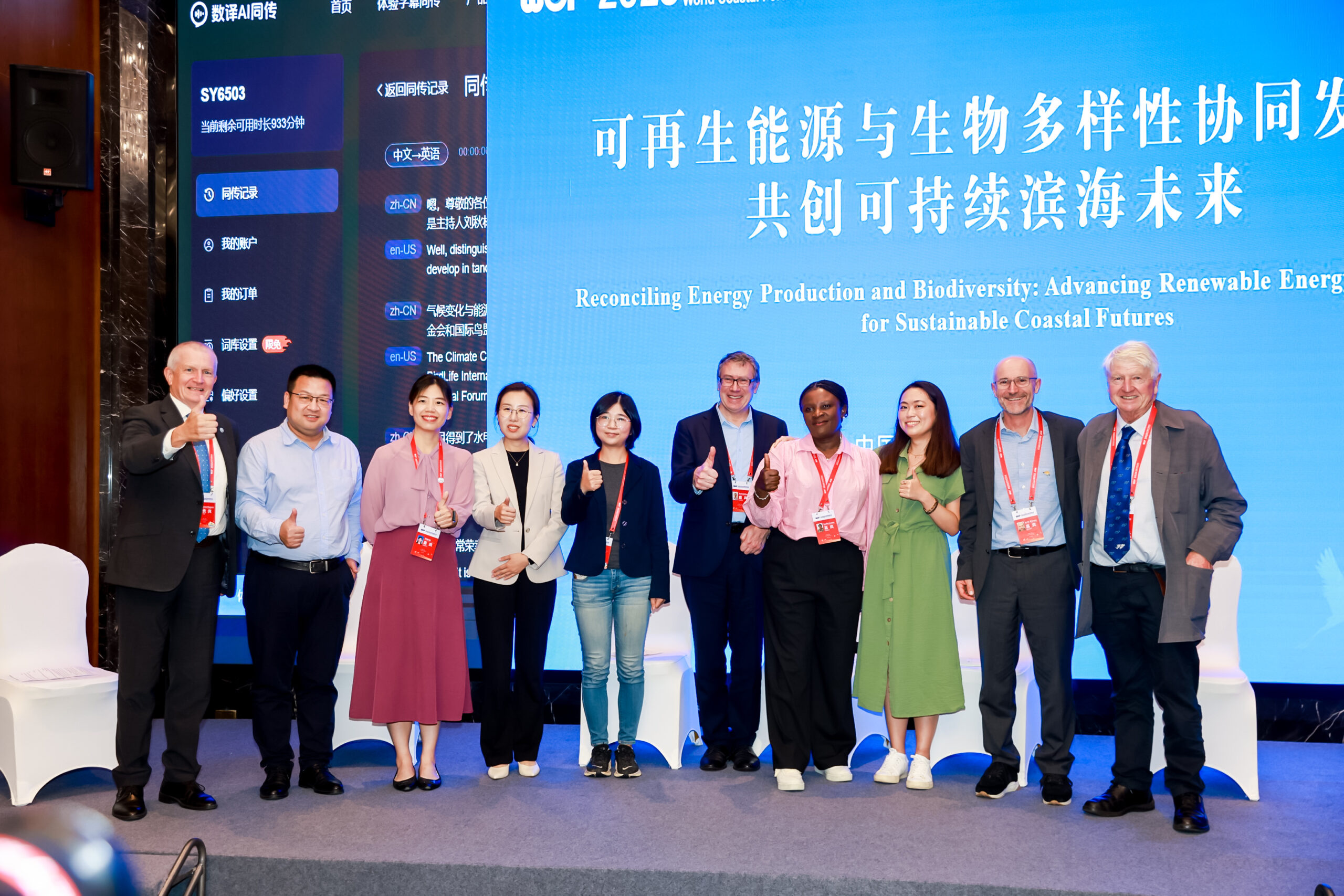The International Union for Conservation of Nature (IUCN), in collaboration with the World Coastal Forum Coordination Group members Eco-Foundation Global and BirdLife International, hosted a session focused on aligning renewable energy development with biodiversity conservation and spatial planning. The dialogue fostered cross-sector cooperation and generated recommendations for sustainable coastal development.
The Vice Mayor of Yancheng City, Mr. Wang Lianchun, the Chair of the World Coastal Forum Coordination Group, Mr Zhang Xinsheng, and IUCN Deputy Director General, Mr. Stewart Maginnis, delivered the opening remarks at the workshop. The International Advisor to the Forum, Mr Stanley Johnson, followed with a keynote speech on the international perspective of renewable energy development.
Stewart Maginnis: “The green and just energy transition must work for both people and nature.”
Opening the session, Stewart Maginnis, IUCN Deputy Director General, highlighted that the global shift to renewable energy must go beyond decarbonization to deliver equitable and nature-positive outcomes:
“The Green, Just Energy Transition signifies more than the move from fossil fuels to renewables—it is our collective commitment to achieve this shift equitably for people and beneficially for nature,” Maginnis stated.
“Tripling global renewable capacity by 2030 is critical, but this acceleration must avoid repeating past mistakes. We must integrate biodiversity safeguards and fair community engagement from the start.”
Maginnis emphasized that limiting global warming is impossible without healthy ecosystems, noting that renewable energy infrastructure should be planned and deployed hand-in-hand with ecosystem protection. He presented IUCN’s programmatic approach to renewable energy and biodiversity, including initiatives that support Cumulative Impact Assessment (CIA), spatial planning, and nature-positive business models.
“Renewable energy and biodiversity are not opposing goals—they are interdependent. A successful energy transition must be grounded in biodiversity protection, social equity, and sustainable growth,” he concluded.
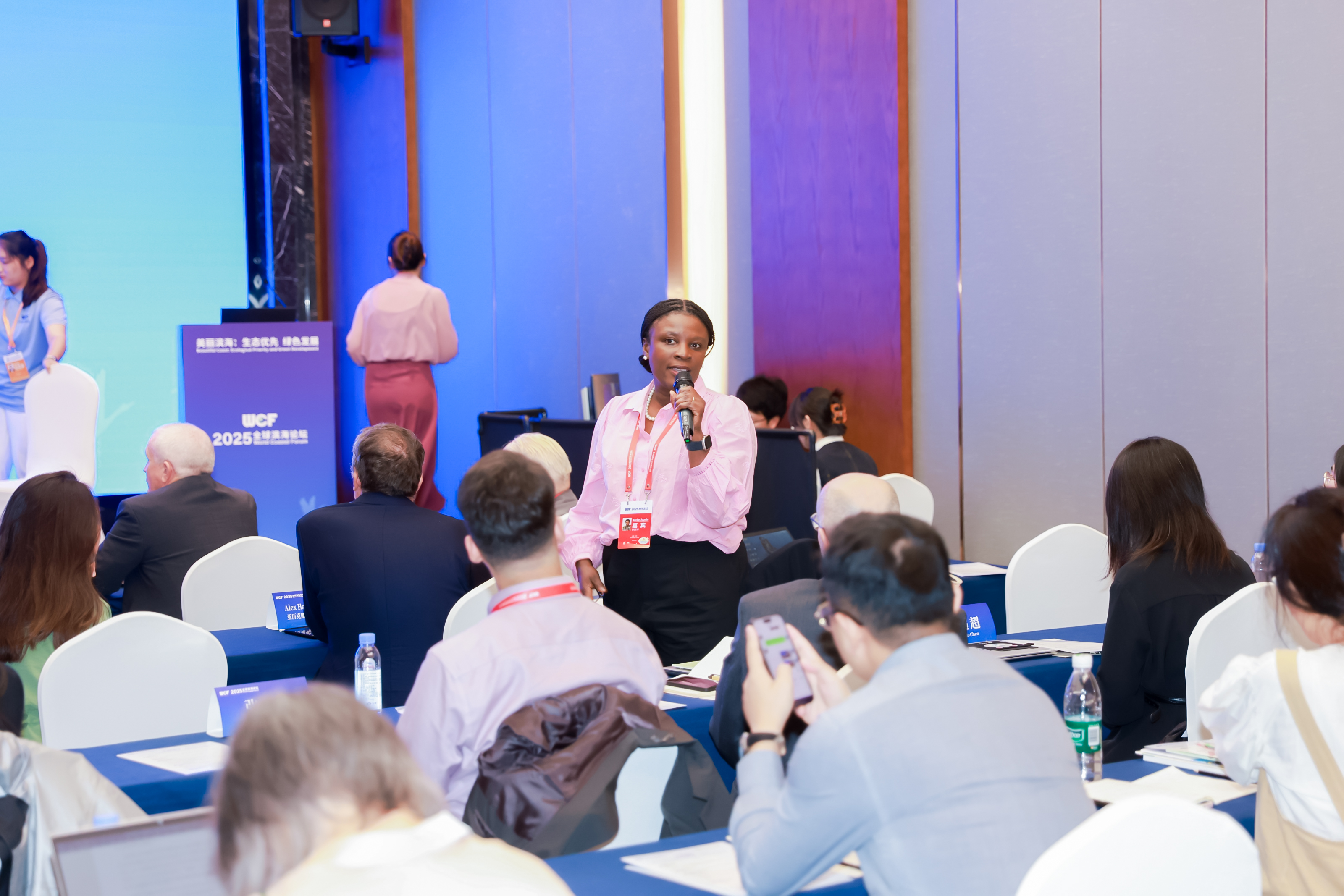
Rachel Asante-Owusu: “We must move from avoiding harm to delivering measurable biodiversity gains.”
During the expert dialogue, Rachel Asante-Owusu, IUCN’s Global Lead on Energy Transition, underscored the urgent need for integrated approaches to address the twin crises of climate change and biodiversity loss.
Meeting the Paris Agreement target requires rapid renewable energy expansion, but this must align with the Kunming–Montreal Global Biodiversity Framework’s goal to halt and reverse biodiversity loss by 2030,” she noted.
Asante-Owusu presented key findings from IUCN’s Renewables for Nature initiative, which has evolved from project-level mitigation guidance (Phase 1) to a broader focus on systemic solutions (Phase 2) that help governments, investors, and companies incorporate biodiversity into energy planning.
She outlined technical guidance developed under the initiative, including pragmatic approaches to CIA and biodiversity enhancement in renewable projects:
“Effective CIA and spatial planning are essential to meeting both climate and biodiversity targets. We must move toward more quantitative, ecologically realistic methods supported by better data collection and cross-sector collaboration.”
On biodiversity enhancement, she emphasized:
“Enhancement measures must be additional to mitigation and based on evidence. They should be measurable, participatory, and deliver long-term benefits for ecosystems and communities. This approach allows renewable energy projects to actively contribute to the nature-positive agenda.”
Shared Learning and Future Pathways
Three representatives from leading renewable energy companies shared their experiences integrating biodiversity and conservation into project design and implementation.
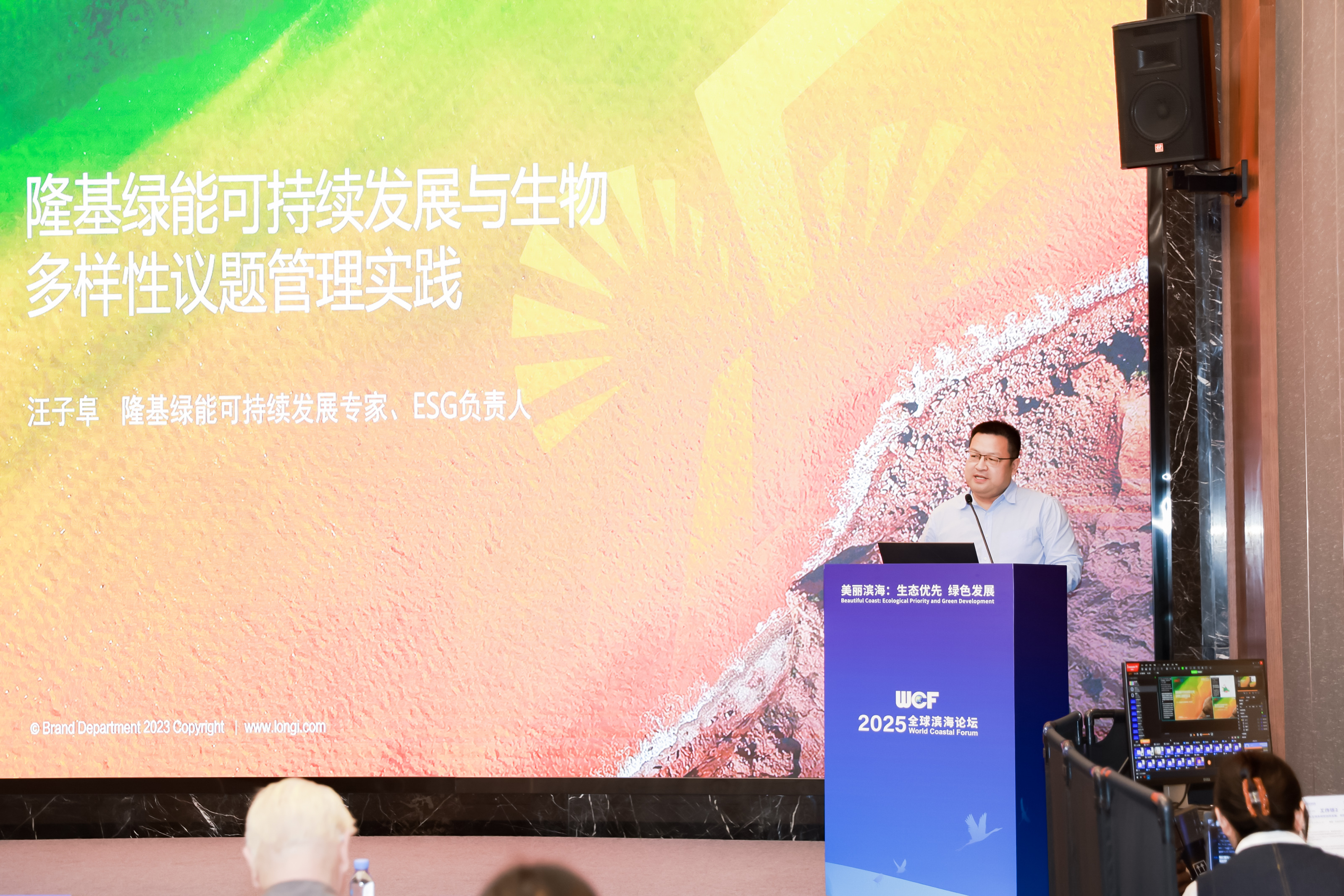
LONGi Green Energy Technology Co. Ltd is at the forefront of sustainable development and biodiversity management. Through its LIGHT philosophy, the company is committed to providing affordable clean energy for all. LONGi has enhanced its digital tools, implemented a CRM system, and created a mobile app to improve customer engagement. Its sustainability efforts—spanning global initiatives, environmental management, and social responsibility—set new standards in the photovoltaic industry and contribute to a greener future.
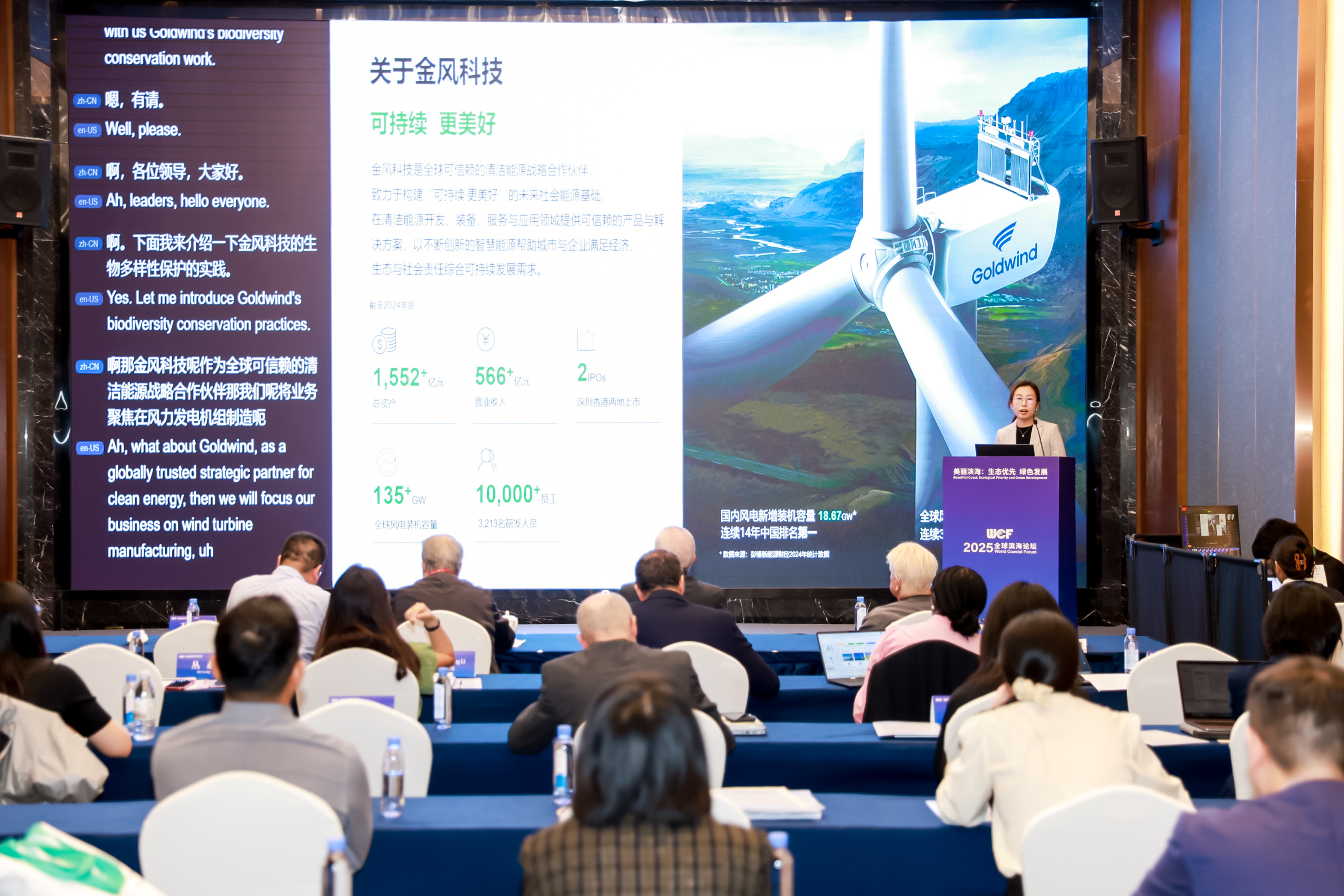
Goldwind Technology is pioneering sustainable wind energy by promoting harmony between humans and nature. Its initiatives include green supply chains, recyclable wind turbines, and biodiversity protection in both onshore and offshore wind farms. Committed to reducing carbon emissions and enhancing energy efficiency, Goldwind advances renewable energy innovation while supporting community well-being and environmental stewardship.
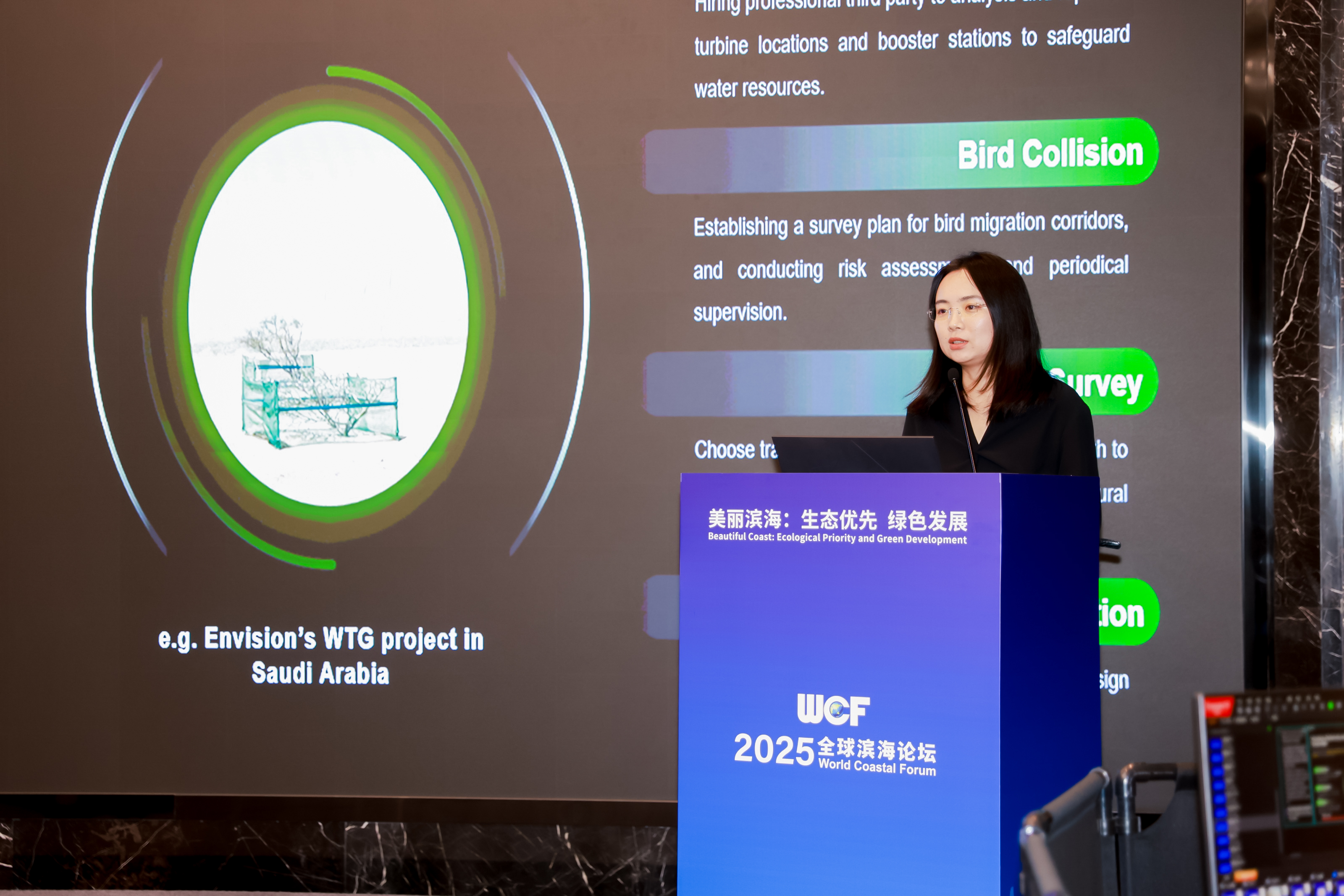
Envision Energy integrates biodiversity conservation into its operations through international frameworks and ecological protocols. Its Greenwich platform helps identify and avoid protected areas while establishing custom biodiversity zones. Projects such as Guangxi Rongshui and Gao’an Wind combine biodiversity protection with community engagement. In India, Envision collaborates with the WMG Foundation to restore heritage sites, combat poaching and forest fires, and has planted over 12,700 saplings across six states. These initiatives demonstrate Envision’s holistic approach to safeguarding nature and promoting sustainable development.
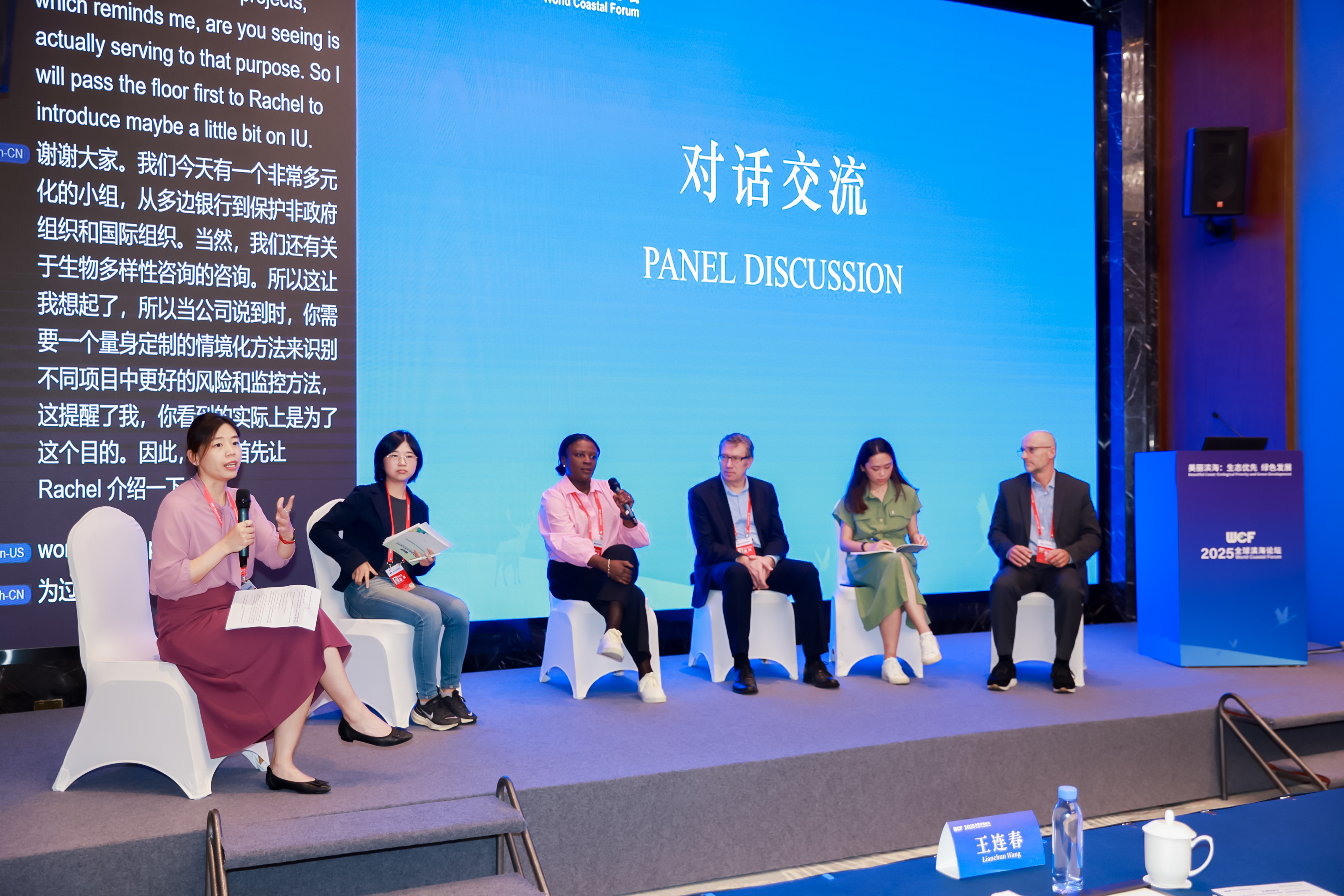
Speakers from the Asian Infrastructure Investment Bank (AIIB), BirdLife International, Shan Shui Conservation Center, Biotope, and IUCN shared practical tools and recommendations—from biodiversity-sensitive spatial planning to co-benefit projects that integrate local community engagement.
Panel discussions explored how national and regional policies can incorporate biodiversity safeguards into offshore wind development; best practices in marine spatial planning, stakeholder engagement, and CIA; and mechanisms to foster cross-sector collaboration for accelerating nature-positive renewable deployment.
The session concluded with a call to strengthen partnerships and innovation in marine spatial planning and biodiversity monitoring, ensuring that the next phase of renewable energy growth enhances ecosystem resilience and supports sustainable coastal development.
As the world races toward decarbonization, this dialogue at the World Coastal Forum reaffirmed that the path to net-zero must also be the path to nature-positive.
Learn more about IUCN’s Renewables for Nature initiative and access key guidance documents:
